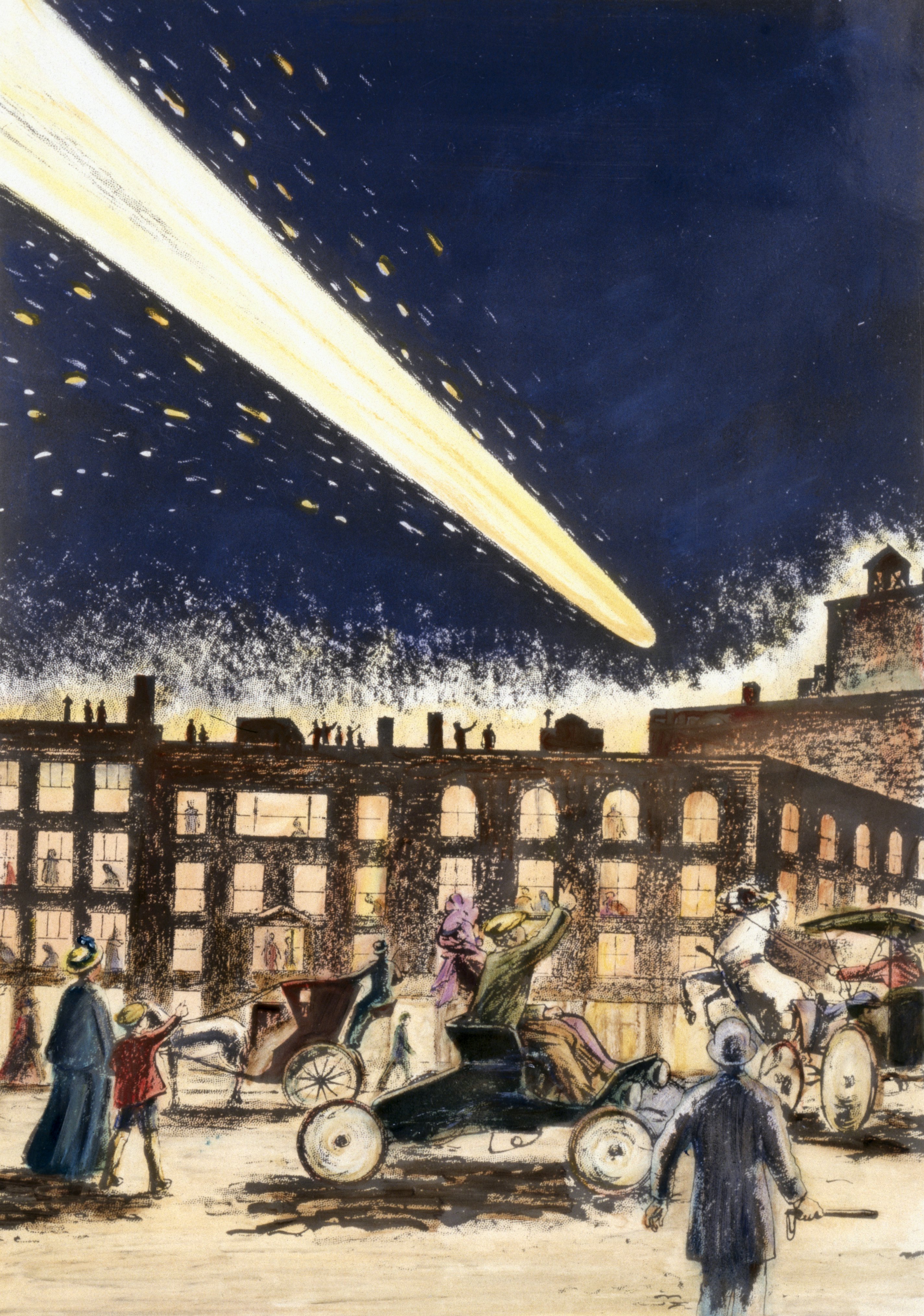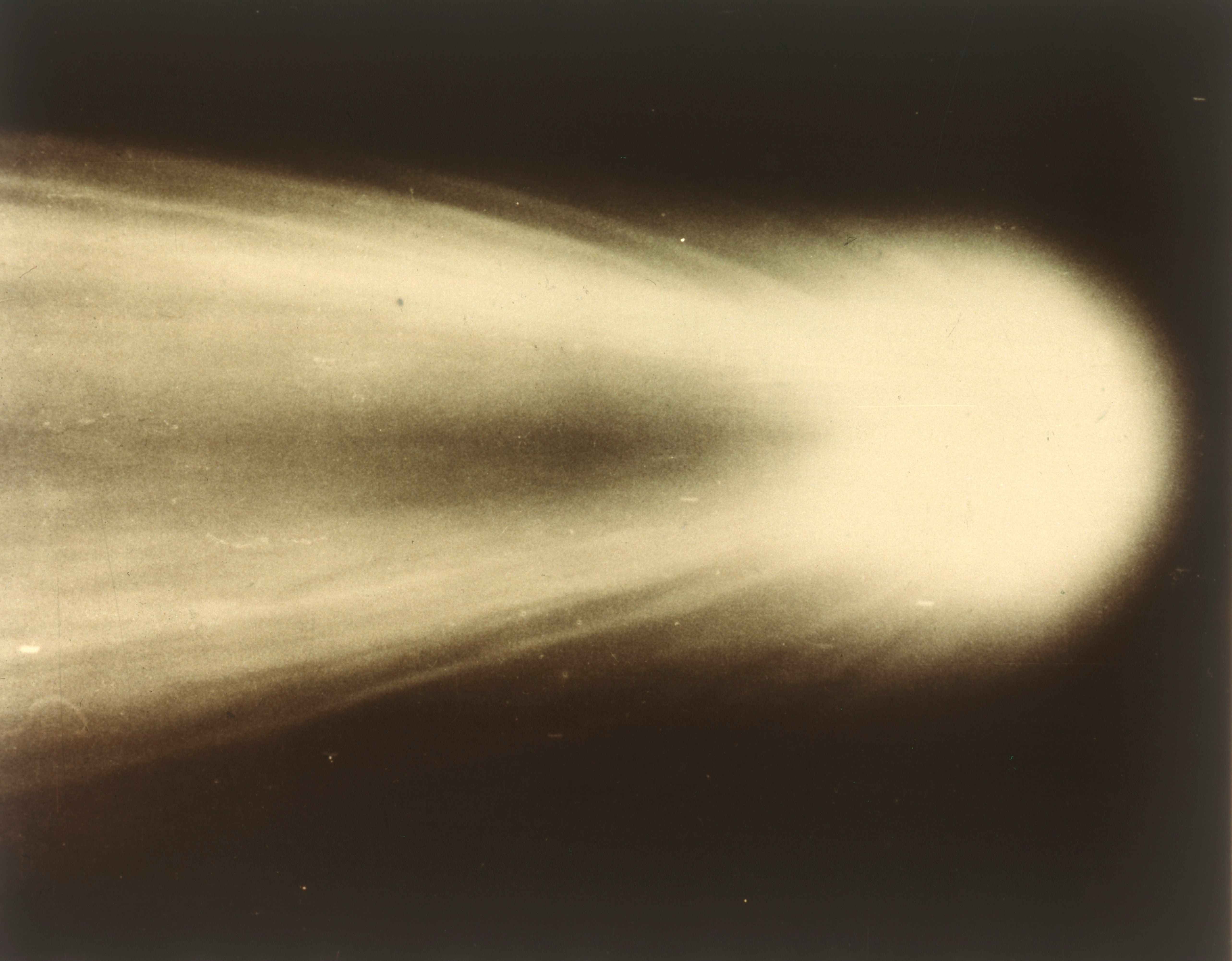
80’s and 90’s kids have a strange taste for quicksand and Halley’s comet, the famous white glare that last visited us in 1986. I remember listening to the radio while my mom drove me to the park (or wherever else 9-year-olds go) and hearing the band Shinedown sing: “I just saw Halley’s comet / she waved / said, ‘Why you always running in place?’”
This lyric seems practically engineered for high tops-wearing elementary schoolers, so Halley’s comet has glowed in a wistful part of my mind for the past 14 years. I’ve always wanted to see Halley’s comet, completely unaware that I could have been viewing a yearly, Halley-made meteor shower this whole time. If you didn’t know about this particular spring shower, either, you’ll get all the details in today’s newsletter.
But before you start to skygaze, voting for this year’s Webby Awards will soon come to a close. Show your support for Inverse Daily by clicking this link — thank you for all you do as readers!
This is an adapted version of the Inverse Daily newsletter for Friday, April 15, 2022. Subscribe for free and learn something new every day.

You need to see the bright embers of Halley’s Comet this spring
The Eta Aquarids meteor shower was first spotted by English astronomer George Lyon in 1870, and astronomy fans have watched it spot our skies every spring since then. It happens because of Halley’s Comet, which graces our inner Solar System every 76 years, and because space is dusty. As Earth turns through it, “dust hits our upper atmosphere harmlessly and leaves behind a fiery trail that we call a ‘shooting star,’ or meteor shower,” writes Elizabeth Howell.
This year, you can best see the trail of famous, gleaming dust in the early morning on May 5. “The best time to head out is in the hours before dawn,” writes Elizabeth Howell. Try leaving your house around 2 a.m. and finding a good, dark spot. “Give your eyes at least 20 minutes to adjust to the darkness,” writes Howell.
If your schedule won’t allow for a 2 a.m. pitch-black cavort with the sky, don’t worry — “it is possible to catch a few more meteors between April 19 and May 28,” writes Howell, “with the best chances being the nights around the peak.”

Should you still try to avoid Covid-19?
Personally, yes, I think you should — I, a 23-year-old of ample enough health and wellness, am still struggling with some lingering effects of my Covid-19 infection. Some experts would agree with me, but notably, “CDC, state, and local guidelines on how to best protect yourself and others have changed a lot through the past 24 months,” writes Lauren Leffer. Because of these guidelines, many people in the U.S. are shedding their masks and heading inside packed restaurants, theaters, and bars. It seems reminiscent of the “before times,” but our reality is far from that.
Experts tell Inverse that until “the whole world is vaccinated or otherwise has some immunity to the coronavirus, new, more contagious variants will keep popping up,” but you shouldn’t feel defeated by that. “If you’ve managed to avoid Covid-19 this long, there are a few key reasons to keep avoiding it for even longer,” writes Leffer.
In the rest of her article, Leffer breaks down those reasons in expert-informed detail. Some possible motivations for staying safe and masked-up include holding out for better treatment and looking out for the most vulnerable members of your family and community. “On top of getting vaccinated and boosted, simple measures like masking where possible in public can still make a big difference for your health and others,” writes Leffer.

One Zika mutation could make the virus more dangerous
Covid-19 has found one sick rival in the Zika virus, which could become more infectious with one possible mutation. Yay! “On Tuesday, a team of researchers in California, Texas, and Mexico published a study in Cell Reports outlining how a predictable change in just one amino acid could yield a more infectious, immunity evading Zika virus,” writes Inverse health reporter Katie MacBride. “The findings should serve as a broad warning about the importance of getting ahead of virus mutations and pandemic preparedness as a whole.”
Just to be clear: this mutation has not already occurred. It’s just a possibility, but examining every possibility is how infectious disease experts help create treatments, vaccines, and other ways to protect the public from illness.
“The Zika virus was first discovered in 1947 in Uganda,” writes MacBride. “It is primarily transmitted to humans via mosquitos but can also be transmitted through some bodily fluids.” Almost 80 percent of adults who contract the virus are asymptomatic, but it still can produce neurodevelopmental disorders in fetuses and other potential issues. To prevent a spread, researchers must stay curious and vigilant.

Weekend sendoff: Elden Ring’s best bosses drew inspiration from an unlikely source
This weekend, learn all there is to know about the epic, sweeping, Japanese-made video game Elden Ring’s connection to Ireland, courtesy of Inverse’s gaming section. Irish writer Cian Maher documents in fascinating detail every way Elden Ring enemies, areas, and even names are influenced by the 5 million-people-strong Emerald Isle.
“It’s very cool to see FromSoft integrate something into the lore that only a small number of players would naturally pick up on,” Maher writes. “Elden Ring doesn’t just coincidentally overlap with these elements of Irish culture by accident 500 times a minute — it openly embraces its Irish influences in a way very few triple-A games have done before.”
You, in turn, can embrace FromSoftware’s artful cultural melt by spending some time with this feature.

About this newsletter: Do you think it can be improved? Have a story idea? Want to share a story about the time you met an astronaut? Send those thoughts and more to newsletter@inverse.com.
- On this day in history: Today in 1452, polymath Leonardo da Vinci was born. You may know him for being, uh, Leonardo da Vinci. Some of his many lifetime accomplishments include significant personal research done in the field of anatomy, the invention of the helicopter-like “aerial screw,” and the painting of La Gioconda, or the Mona Lisa.
Song of the day: “Postcards from Italy” by Beirut.







